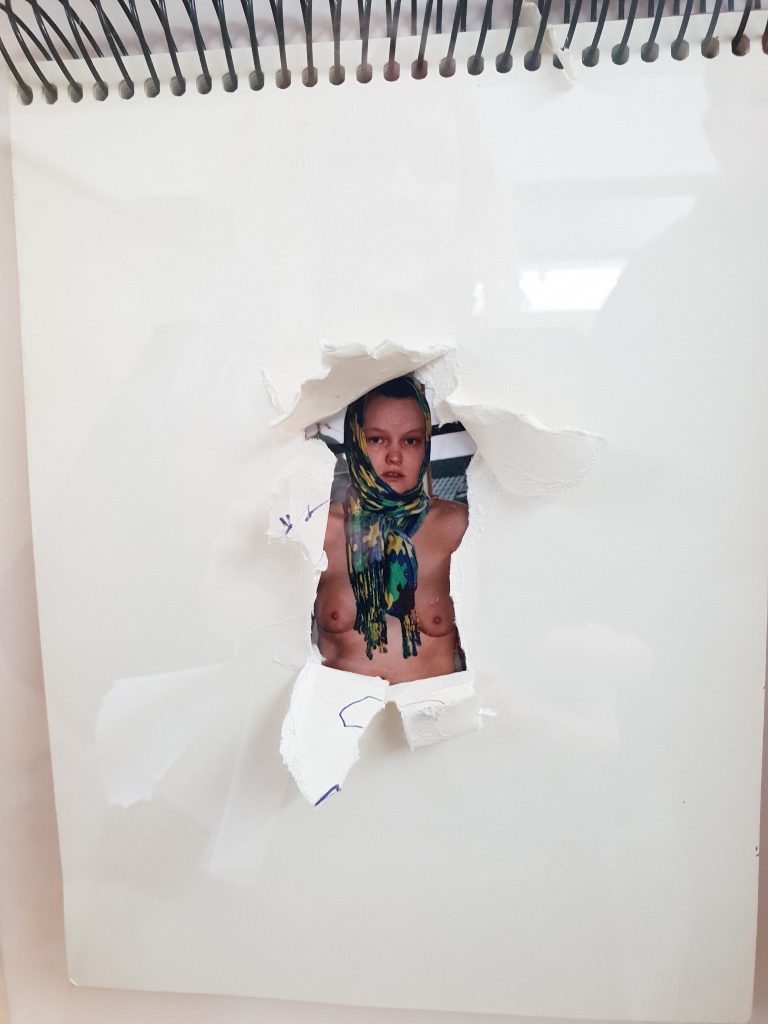(THIS ARTICLE IS MACHINE TRANSLATED by Google from Norwegian)
Various photo books
Catherine Sieverding
Even with simple equipment, the snapshot can be used to explore body, gender, sexuality and identity. The many raw extravagant and very intimate pictures of photographer Maria Pasenau have something tacky and intriguing sensual about them. Where the motives themselves could quickly have resulted in a speculative and disgusting presentation, Pasenau instead finds something vulnerable, trembling and color-saturated poetically in the motifs.
Pasenau's recurring nude studies of himself and photographic extradition friendship project provide a powerful image of a transitional ritual: cascades of images from a disjointed and disputed skinless exploratory beginning adulthood hit a nerve. As she herself says: “The pictures are from a time that is not coming back. I photographed not to forget. ”

At a furious pace, moderator Zofia Cielatkowska draws the attendees at Kulturhuset through the photographs and process behind the recent exhibition Pasenau and the Devil and Pasenau's public-funded photo book Whit Kind Regrets - yes, the spelling and citation is the dyslexic artist's own choice, it originated from a real email Pasenau sent.
Young age spirit
With its massive production – 350 of a total of 3000 documentation photos took place in the book – Pasenau demands to be heard and not least seen. She is among the youngest purchased at the National Museum with 12 photographic works in April this year.
Her ability to portray a young spirit untouched gives clear associations to the photographer Nan Golding or the filmmaker Larry Clark, who many like to compare her with: Close-ups of faces where the pimples, blood or other from the imperfect body is not something that is hidden or ashamed. This shameless authenticity is followed by cheeky, tantalizing and luminescent elements that relate back to Pasenau's time as photo editor for the magazine NATT & DAG.

Pasenau talks about the expanded use of himself in his latest exhibition Pasenau and the Devil at the Photo Gallery: about the freedom to push the boundaries, not be dependent on holding back for others, to drop clarifications of rights.
With the exhibition's use of writing poetry, photography, installation and wood sculpture by itself, a kinship to Bjarne Melgaard's earlier works shines through.
manipulation
The evening's second main guest is the Czech-born German Katharina Sieverding, professor in Berlin and known for her many series of colossal self-portraits. As an anti-photographic act, her work is often based on a passport photo that is manipulated in layers. The mythical, androgynous and indefinable elevates the portraits not only beyond the private, but also to an experience that brings us far beyond the face that was their starting point.

Enlarged images of a blue sun, together with the edited self-portraits, have been put together in ever new constellations in Sieverding's countless photo books and international exhibitions. The relationships between the various works and how their perception is changed by the context is one of several aspects Sieverding has in common with Pasenau.
That a breathtaking presentation at Kulturhuset only shows a part of Sieverding's work, says something about her productivity. She deserved more space.

Even with a 50-year age difference, these two photographing night queens are more alike than different. Sieverding, on the other hand, is not concerned with photography as a memory. She solarises, gilds, filters and scrapes – with this she makes the familiar into images of the previously unspoken. In recent years, she has worked explicitly politically.
Where Pasenau resorts to Kickstarter to complete his book project, Sieverding has used affordable black-and-white copies and wall projections to ensure the monumentality in the context of his work.
Film critic and art historian Heidi Bale Amundsen and sociology professor Bjørn Schiermer Andersen rounded off the evening at Kulturhuset at a slower pace. Well-thought-out, they reflected on, among other things, how photography changes the moment it ends up between two binders, but also pointed out the need to take responsibility for the photography's great influence.
The exhibition Pasenau and the Devil shown at the Photo Gallery until 12 October.


